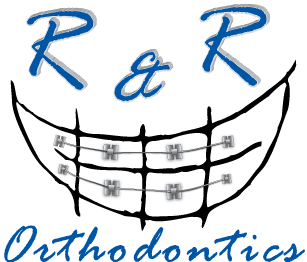Living with Braces
Braces need some breaking in before you feel comfortable with them. Your teeth will be tender up to a few days after an appointment. Avoid foods that are hard and/or sticky so we recommend you eat a soft diet. Don’t eat tough meat or raw vegetables as they may damage your braces. Once you get used to eating with your braces on, you may be able to enjoy most of your favorite foods. However, don’ put your braces to test by eating food that causes discomfort even when eating normally.
Brushing and Flossing
Don’t think that now that you have braces you don’t need to worry about flossing or brushing. Regular brushing and flossing is required more than ever before. Your efforts in keeping your mouth clean will ensure the health of your mouth and gums. You don’t want your time and investment to go wasted simply because you were too lazy to clean your teeth. If you are unable to keep your gums and teeth clean, you may need to visit a dentist more often than usual to get your teeth professionally cleaned.
Eating with Braces
What can you eat? Let’s talk about what you shouldn’t eat! For the first day or so, stick to soft foods. Avoid tough meats, hard breads, and raw vegetables. Before long, you’ll be able to bite a cucumber again. But you’ll need to protect your orthodontic appliances when you eat for as long as you’re wearing braces.
Foods to Avoid
- Chewy foods: bagels, hard rolls, licorice
- Crunchy foods: popcorn, ice
- Sticky foods: caramels, gum
- Hard foods: nuts, candy
- Foods you have to bite into: corn on the cob, apples, carrots
Chewing on hard things (for example, pens, pencils or fingernails) can damage the braces. Damaged braces will cause treatment to take longer.
General Soreness
When you get your braces on, you may feel general soreness in your mouth and teeth may be tender to biting pressures for 3 – 5 days. Take Tylenol or whatever you normally take for headache or discomfort. The lips, cheeks and tongue may also become irritated for one to two weeks as they toughen and become accustomed to the braces. We will supply wax to put on the braces in irritated areas to lessen discomfort.
Loosening of Teeth
This is to be expected throughout treatment. Don’t worry! It’s normal. Teeth must loosen first so they can move. The teeth will firm up in their new — corrected — positions after treatment is completed.
Loose Wire or Band
Don’t be alarmed if a wire or band comes loose. This happens occasionally. If a wire sticks out and is irritating, use a blunt instrument (eraser end of a pencil) and carefully, gently push the irritating wire back under the archwire. Simply get it out of the way. If irritation to the lips or mouth continues, place wax or wet cotton on the wire to reduce the annoyance. Call our office as soon as possible for an appointment to check and repair the problem.
Rubber Band Wear
To successfully complete orthodontic treatment, the patient must work together with the orthodontist. The teeth and jaws can only move toward their corrected positions if the patient consistently wears the rubber bands or other appliances as prescribed. Lack of cooperation following instructions and damaged appliances lengthen the treatment time… so, please … follow instructions.
Athletics
If you play sports, it’s important you let us know. A protective mouthguard is provided for playing contact sports.
Stick to the Plan!
In order to achieve the perfect smile with a flawless alignment of the teeth and jaws, a patient needs to follow the treatment plan with consistency. Follow the plan, care for your appliances, and ask us if you have questions!
This includes wearing the prescribed appliances such as head gear and rubber bands recommended by us. The more inconsistent a patient is during the treatment, the more time treatment can take. Therefore, to minimize the treatment duration wear the prescribed appliances as directed.
